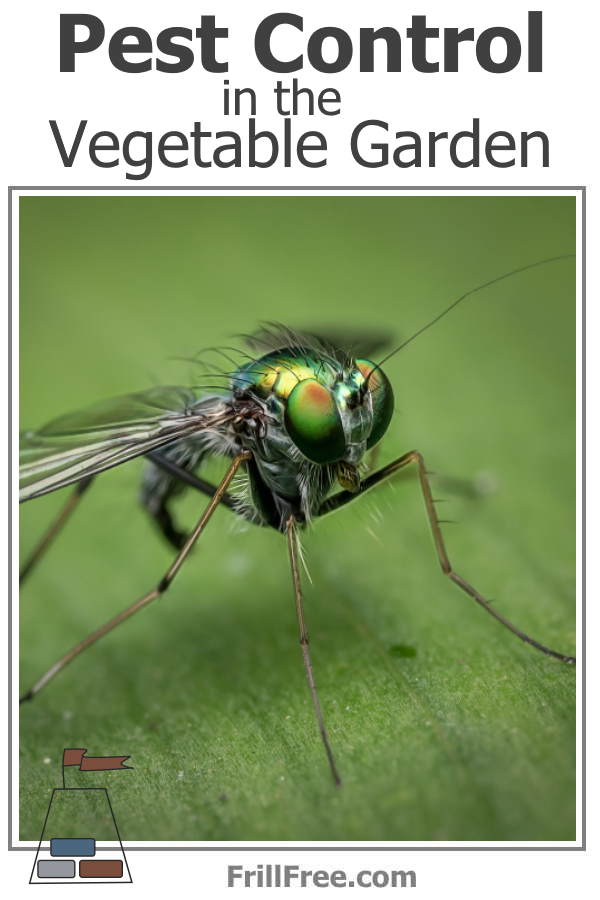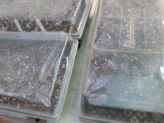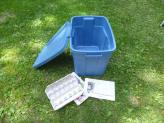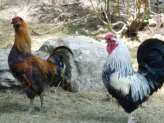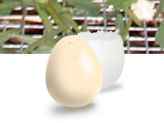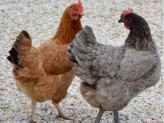- Homesteading
- Growing Vegetables
- Pest Control in the Vegetable Garden
Pest Control in the Vegetable Garden
Natural Remedies and Techniques
So you are eagerly pulling up radishes from the lovely friable soil in your vegetable garden, only to find that they're riddled with holes from pests chewing on them, leaving none for you.
It's disappointing, all right, especially because from the top growth, everything looked fine.
With radishes, fortunately, they're such a fast growing crop that you could reseed and get another crop really soon - and they won't have the same damage as the first one.
This is a great system if you routinely have certain crops that attract pests. It's called a 'trap crop' when you plant an early crop that you sacrifice when the pests move in, then plant the real crop right after.
Make sure to destroy the damaged crop, don't compost it, because that will just allow the pests to move onto the next crop. Having said that, a super hot compost will kill off most pests and pathogens, but it's a specific skill for advanced gardeners only.
Vegetables that do well with a trap crop are fast growing, and can easily grow from seed. These plants are radishes, turnips, carrots and other root vegetables.
Other ways to protect young vegetables, especially those that don't need insects to pollinate their flowers (such as peas, tomatoes, or peppers) can be covered with row covers, like Remay or similar. Then the insects that are the adult form of these bugs can't get at the base of the plant to lay their eggs.
Use tin foil or aluminum foil around the base of really susceptible plants to 'foil' the pests - they'll be confused over which way is up due to the reflection.
This is a good method that will prevent the damage from a lot of insects; planting flowers like marigolds among the crop.
This makes it difficult for the pest to find the plant it wants to lay its eggs on, because of the scent of the marigolds.
Flowers aren't just part of a vegetable garden because they're pretty.
Just be careful not to toss out the baby with the bath water - meaning, just because something is eating your plants, doesn't mean it's a pest.
Sacrifice some plants, to ensure a new generation - or plant some of their favorite caterpillar plants that you don't mind getting damaged.
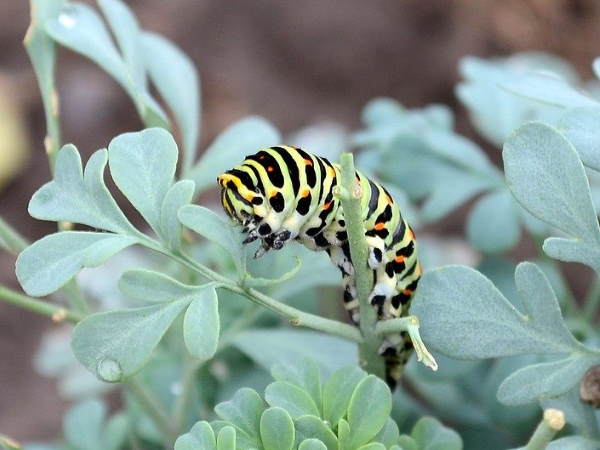 Swallowtail butterfly caterpillar on Ruta graveolens, one of it's favorite host plants
Swallowtail butterfly caterpillar on Ruta graveolens, one of it's favorite host plantsDon't make the mistake I did, in my beginning journey of organic gardening. I saw a host of super large and brightly colored caterpillars on my dill, and without knowing better, I killed some of them.
Oh the shame! They were swallowtail caterpillars! Now I know better, and plant lots of dill for any visitors that show up to my garden.
The use of yellow sticky traps is also a good way to get rid of adult pests.
Many of them are attracted to yellow as adults, and then they get stuck to the glue, preventing them from laying eggs.
Change the sticky traps regularly, as they get filled with insects. In time, you won't need them any more as the population of pests goes down.
At times, you may have to get your hands dirty and do some of the work yourself. Slugs and snails, or the Colorado potato beetle are examples of this. Hand picking them and putting them in a bucket of water is the easiest way to prevent them from spreading.
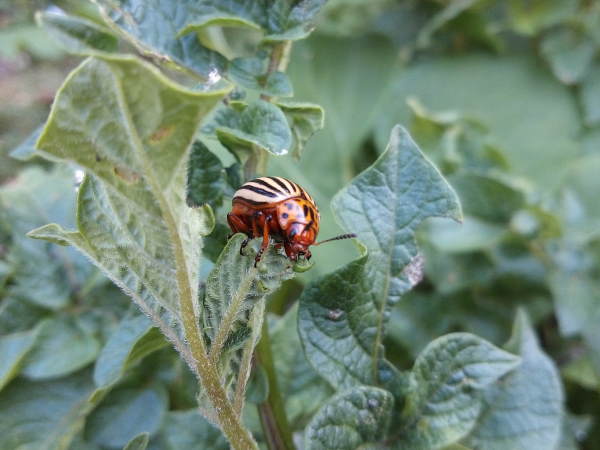 Colorado potato beetle on a potato plant
Colorado potato beetle on a potato plantIf you can disrupt the pests life cycle, by making it impossible for them to find their favorite plants, or by eliminating one particular growth stage, next year it will be much better to handle.
Plant your beds in a mixed fashion, such as using the square foot gardening method, or intercropping. Confuse the pests!
If you absolutely have to take drastic action, a spray of soapy water or an application of diatomaceous earth might be a good go-to.
